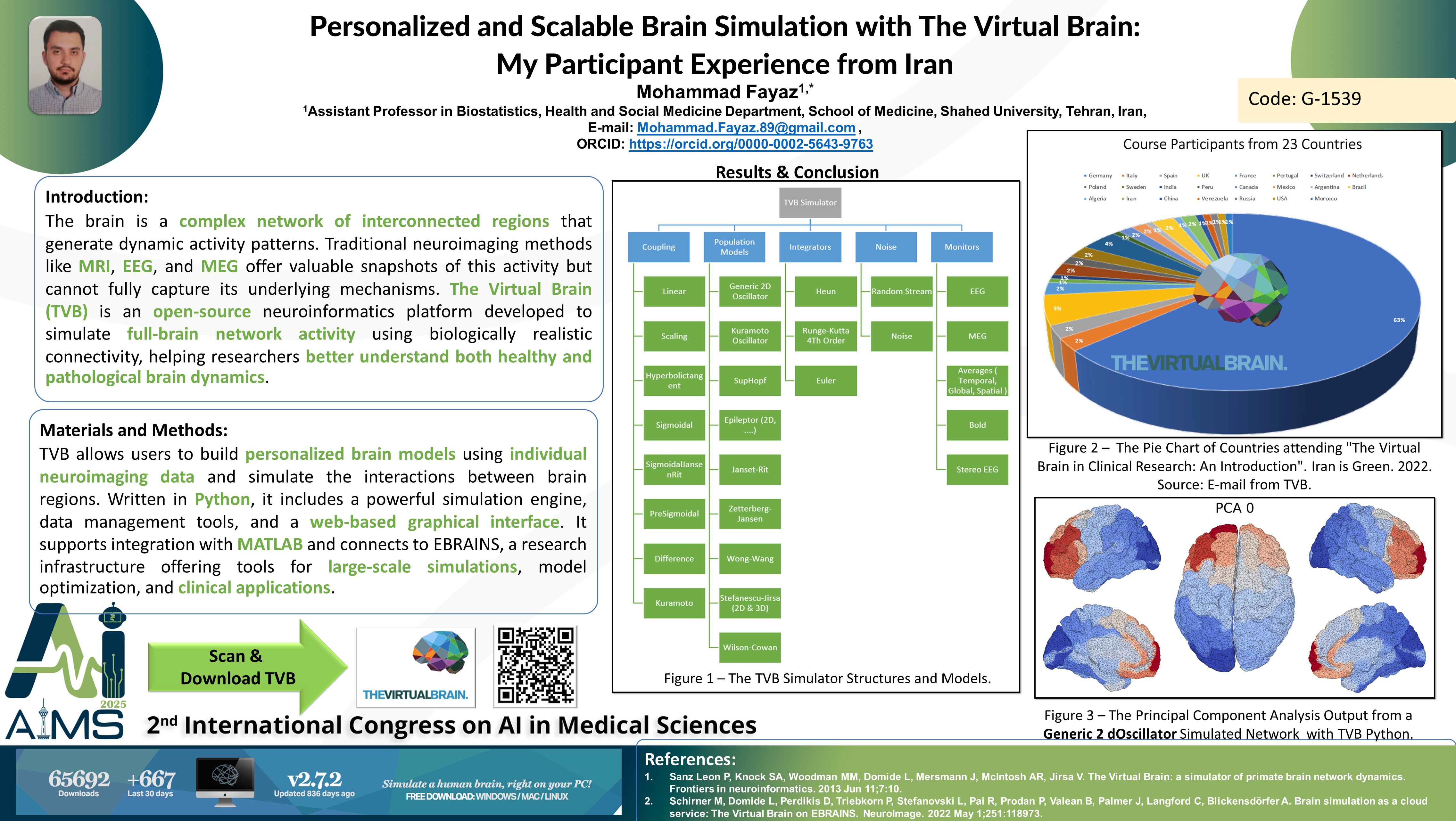Personalized and Scalable Brain Simulation with The Virtual Brain: My Participant Experience from Iran
Code: G-1539
Authors: Mohammad Fayaz * ℗
Schedule: Not Scheduled!
Tag: Cancer Diagnosis & Treatment
Download: Download Poster
Abstract:
Abstract
Background and Aims: The Virtual Brain (TVB) is an advanced neuroinformatics platform designed to simulate primate brain network dynamics through biologically realistic connectivity. It enables researchers to model, analyze, and personalize whole-brain simulations using multimodal neuroimaging data, such as functional MRI (fMRI), EEG, and MEG. TVB also supports applications in clinical research, particularly in understanding neurological disorders and their progression. Additionally, it offers a framework for integrating multimodal data sources, improving the accuracy of brain network models. Method: TVB integrates with MATLAB and Python-based scientific tools to construct and simulate brain network models. As a cloud-based service on EBRAINS, it enhances reproducibility, scalability, and collaborative research. It provides tools for MRI processing, high-performance computing for large-scale simulations, and Bayesian parameter optimization for epilepsy patient models. Additionally, network-based modeling is employed to analyze instrength gradients in the human connectome, which influence cortical traveling waves and frequency gradients. TVB also allows the incorporation of small-scale spiking network simulations to better capture the multi-scale complexity of brain activity. Results: Structural connectivity in the brain plays a crucial role in neural dynamics. The presence of instrength gradients directs traveling wave propagation and shapes frequency gradients, impacting brain function and dysfunction. Virtual brain twins, a personalized extension of TVB, leverage individual neuroimaging data for customized whole-brain models. These models have been successfully applied to aging and neurological disorders such as epilepsy, Alzheimer’s disease, multiple sclerosis, Parkinson’s disease, and psychiatric conditions. Personalized modeling using spatial masks has provided insights into physiological and pathophysiological mechanisms, improving diagnostic and therapeutic strategies. Conclusion: TVB represents a significant advancement in computational neuroscience, bridging the gap between theoretical modeling and clinical applications. As a standalone and cloud-based simulation tool, it enables scalable, personalized, and high-fidelity brain modeling. By advancing our understanding of large-scale brain network dynamics, TVB paves the way for novel therapeutic strategies and precision medicine approaches in neuroscience. It has a well-developed website with extensive educational materials and hosts online schools with participants from around the globe. Furthermore, information about ongoing research and updates is regularly provided, fostering a dynamic and engaging
Keywords
Virtual Brain Simulation, Personalized Neuroscience, Neuroinformatics
